
Mental Health
May 2024
Everybody knows that exercise keeps people physically healthy. People often overlook that exercise can also keep you mentally healthy. Research shows that people who exercise regularly have better emotional and mental wellbeing, and lower rates of mental illness (Richardson, 2005, link below) . Exercise also seems to reduce the risk of developing mental illness, as well as have the ability to treat mental health conditions, such as depression or anxiety. Research shows that physical activity can be just as effective as antidepressants and other psychological treatments (Richardson, 2005, link below).
Why does physical activity make us feel better mentally? People who exercise regularly say that it just makes them feel good. Exercise can boost your mood, concentration, and alertness. But what really happens when you exercise? All kinds of chemical changes in your brain (endorphins, serotonin, stress hormone levels) occur when you exercise, as well as reducing inflammation and increasing neural growth. It can also help you sleep better, and better sleep helps you manage your mood. Going to the gym can also be seen as a distraction from negative thoughts and also an outlet for stress and frustration.
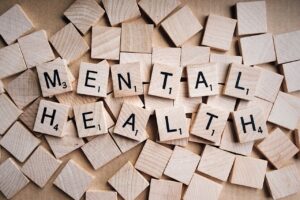 When exercising becomes a habit, your mind and body will benefit a lot more. Meeting exercise goals can make you feel stronger and more powerful, increasing your self worth and giving you a sense of achievement. One of the major causes of mental health is negative coping behaviors. When faced with mental or emotional challenges, exercising helps you cope positively and build resilience, as opposed to negative coping behaviors such as drugs or alcohol.
When exercising becomes a habit, your mind and body will benefit a lot more. Meeting exercise goals can make you feel stronger and more powerful, increasing your self worth and giving you a sense of achievement. One of the major causes of mental health is negative coping behaviors. When faced with mental or emotional challenges, exercising helps you cope positively and build resilience, as opposed to negative coping behaviors such as drugs or alcohol.
But exercise doesn’t have to be intense and long-lasting to be effective. Studies show that low to moderate intensity exercise is enough to make a difference in your mood and thinking patterns. Any exercise is better than none. A recent study done by Harvard found that running for 15 minutes a day or walking for an hour reduces the risk for depression by 25%. Going for a light walk, or other activities such as yoga and stretching, can also have huge benefits on your mind. Recent studies have shown that after walking outside, people reported a higher level of enthusiasm, pleasure, and self esteem, with lower levels of tension, fatigue, and depression.
As for anxiety, exercise is a natural anti-anxiety treatment. Relieving tension and stress, boosting physical and mental energy, simply going for a run enhances your well-being. But it’s a lot more effective in treating anxiety specifically if you just pay attention. Take notice of the little things such as feeling the sensation of your feet hitting the ground, or the rhythm of your breathing, or how the wind feels hitting your face. Doing this can easily interrupt the constant flow of worries and stress in your mind.
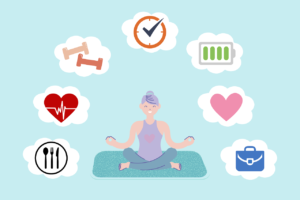 Relieving stress with exercise works similarly. Do you ever notice how your body feels when you are under stress? Tense muscles, painful headaches, insomnia or heartburn are all common symptoms. Exercising is an easy way to cure this. Physical activity relieves tension in the body, relaxing your muscles, and since your body and your mind work together, as your body relaxes, your mind will too.
Relieving stress with exercise works similarly. Do you ever notice how your body feels when you are under stress? Tense muscles, painful headaches, insomnia or heartburn are all common symptoms. Exercising is an easy way to cure this. Physical activity relieves tension in the body, relaxing your muscles, and since your body and your mind work together, as your body relaxes, your mind will too.
Some easy ways to get exercise if you don’t know where to start are simple household activities. If you’re really not feeling up to going for a walk or run, or working out, cleaning your house or yard is a fine way to start getting your energy up. After this, start going on walks whenever you can. Using stairs instead of elevators and avoiding driving to get a little bit of exercise works, even if it means parking a few blocks early. One effective way to exercise is doing activities with family. Taking a bike ride, going canoeing, or playing with your kids in the yard are all great ways to get exercise and socialize with the people you love. You don’t have to force yourself through hours in the gym just to experience the benefits. Just simply finding the activities that you enjoy will help you get more out of life.
Research Studies :
Sports Performance
April 2024
All throughout Westchester, year-round, athletes of various different sports are going to personal trainers and doing programs to improve their performance. Personal trainers will create programs including specific exercises that target and enhance different aspects of athletic ability, from structural integrity to sprinting and agility. These programs typically increase speed, coordination, body awareness, and agility.
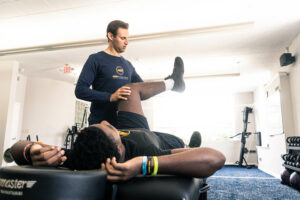 However, there are a lot more concerns that come into sports performance besides just athleticism. One big issue that people see that collides with their athletic performance is poor posture and scoliosis. These days, kids are stimulated with technology as a means of learning and entertainment. Working with technology will continue to grow as a part of everybody’s daily life, and this is one of the main causes of poor posture. When people are looking down at their phones or hunched over looking at their computers for a long time, posture issues are bound to happen.
However, there are a lot more concerns that come into sports performance besides just athleticism. One big issue that people see that collides with their athletic performance is poor posture and scoliosis. These days, kids are stimulated with technology as a means of learning and entertainment. Working with technology will continue to grow as a part of everybody’s daily life, and this is one of the main causes of poor posture. When people are looking down at their phones or hunched over looking at their computers for a long time, posture issues are bound to happen.
When people come into REP Athletics with concerns about poor posture or scoliosis affecting the way they play, we treat it with ELDOA, the most effective exercises for normalizing spinal deviations. In most cases, young athletes with spine issues do not need acute treatment, so they can be corrected through the ELDOA. These exercises focus on creating balance in the spine’s surrounding tissues, improving mobility and strength, allowing the athletes to perform better. What they also do is create a better awareness of posture so the kids can have a good understanding of what good posture is.
Back Pain Relief
March 2024
Back pain is a very common issue that we see at REP Athletics. Lots of different things can relieve this, such as visiting a chiropractor or getting a massage. However, one of the most effective ways to relieve back pain and increase mobility is through exercises and stretches. Common causes of back pain can include repetitive movements, muscle strains, trauma (from falling down, for example), degenerative discs and bones, and much more. But how do stretches even help relieve that? Well, when you do stretches that activate specific muscles in the back that may be causing you pain, blood flow bringing nutrients to that area is increased. This improves the healing process as well as reduces stiffness that may be causing discomfort or pain. As well as increasing blood flow, stretching elongates your muscles, getting rid of tension and stiffness.
Here are some tips to help ease your back pain.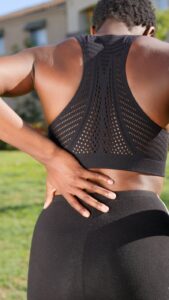
-Of course, stretch daily to promote your spinal health
-Avoid sitting with poor posture. When you’re sitting, try sitting upright to relieve the load on your spinal discs, and remember to get up and walk every so often.
-Lift correctly. If you go to the gym, or even if you lift heavy stuff often, it’s very easy to twist the wrong way. Use proper form and use your leg muscles when you pick up heavy items.
-Reduce pressure on your back when you sleep. Believe it or not, sleeping flat on your back actually puts pressure on your spine. Try putting a pillow under your knees to elevate them.
-Quit smoking. Smoking actually restricts blood flow to the discs that cushion your vertebrae. This could lead to quicker disc degeneration.
Some easy stretches you can try at home to relieve lower back pain are knee to chest stretches, lower back rotational stretches, and a cat-cow stretch. If you have back pain, you should try them!

REstorative Stretch Class
February 2024
This 45-minute session, led by experienced instructors Geoff Rose, Dr. James Benz, and Nicole Yannuzzi, is carefully curated to provide a rejuvenating experience for both body and mind.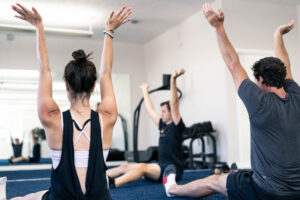
When: Every Saturday at 8am – 8:45am
Where: REP Athletics 233 Boston Post Road Larchmont, NY
What to Expect:
Joint Warmup: Prepare your body for the session with targeted joint warm-up exercises.
Dynamic Stretching: Engage in dynamic stretches to enhance flexibility and range of motion.
Myofascial Stretching: Address those persistent aches and pains with myofascial stretching techniques.
ELDOA: Elevate your posture and overall well-being through the innovative ELDOA method.
Benefits of the Restorative Stretch Class:
•Alleviate low back & neck pain
•Improve hip mobility
•Ease joint pain
•Enhance posture
•Manage stress effectively
Should you have any questions or if there’s anything specific you’d like to know before the class begins, feel free to reach out. Your health and wellness are our top priorities, and we look forward to helping you achieve your fitness goals in the coming year.
A single class is $35
You can purchase an 8 – pack for $240

Stretch sessions at rep Athletics
July 2023
We hope this finds you well and that you’ve been enjoying the sun-soaked adventures and leisurely moments that summer brings. As the days begin to subtly shorten and a hint of autumn waits in the wings, we want to extend a warm greeting from all of us at REP Athletics. As we gradually wind down this delightful season, we also understand the importance of finding balance and reestablishing a sense of structure in our lives. Just as the natural world transitions, so too must we transition from the carefree days of summer into a more focused and intentional mindset.
Now at REP Athletics, we are offering specialized, half hour, stretch sessions with our staff. We will conduct a comprehensive consultation to understand your unique requirements and tailor each session accordingly. We will design a personalized stretching routine just for you!
During this session, our highly skilled and certified professionals will guide you through a series of targeted stretches designed to release tension, increase mobility, and promote overall well-being. Whether you’re an athlete looking to enhance performance, an office worker seeking relief from sedentary habits, or simply someone wanting to unwind and improve flexibility, this session is perfect for you. Our trained professionals will take the time to understand your specific needs and goals, tailoring the session to suit your individual requirements. With a focus on deep breathing and mindfulness, you’ll also enjoy the mental benefits of this session. As you relax into each stretch, you’ll feel the stress melt away, leaving you feeling refreshed, rejuvenated, and centered. Whether you’re looking to improve your athletic performance, relieve everyday aches and pains, or simply take a break from the demands of daily life, our 30-Minute Stretch Session is the perfect way to invest in your well-being. Book your session now and embark on a journey towards a more flexible, balanced, and relaxed you!
Single 30 minute stretch session.
Five 30 minute stretch sessions. Save $25.00 when you purchase a 5 Pack!
Ten 30 minute stretch sessions. Save $100.00 when you purchase a 10 Pack!
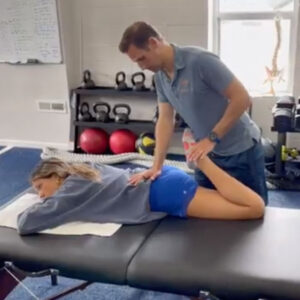

Summer, Sauna, sleep
June 2023
As the temperature rises and the days grow longer, we hope this email finds you in high spirits, ready to embrace the active and vibrant season ahead. At REP Athletics, we couldn’t be more thrilled to welcome the summer months and share some exciting updates with you.
With the spirit of the sun-kissed season in mind, our team has been hard at work creating an array of invigorating and fun-filled experiences for our valued members. Whether you’re a seasoned athlete or a fitness enthusiast looking to embark on a new journey, we have something special in store for everyone this summer.
We Got a Sauna!
Beyond the physical benefits, the infrared sauna is a gateway to mental and emotional serenity. As the warmth envelops you, stress and anxiety melt away, allowing you to enter a state of deep relaxation. The tranquil environment serves as a sanctuary for mindfulness, promoting a calm and centered state of being. Take this opportunity to reconnect with yourself, breathe deeply, and find inner peace amidst the soothing embrace of the infrared sauna.
Join us for a transformative journey of self-care and discover the remarkable benefits of our infrared sauna sessions. Recharge, rejuvenate, and embrace a holistic approach to wellness. Invest in your well-being today and experience the transformative power of the infrared sauna.
Pricing:
One 30 minute sauna session- $35
Five 30 minute sauna sessions- $150
Ten 30 minute sauna sessions- $250
Monthly Membership- $110 per month
(The monthly membership contains Five 30 minute sessions a month)


Empowering womens health: the vital roll of stregth training
May 2023
In a world that is constantly evolving, women’s health has become an essential topic of discussion. While discussions often revolve around nutrition, mental well-being, and cardiovascular fitness, the importance of strength training for women’s health is often overlooked. Recent research has shed light on the numerous benefits of incorporating strength training into women’s fitness routines, showcasing how it can contribute to enhanced physical health, mental well-being, and overall quality of life.
The Science Behind Strength Training
Strength training, also known as resistance training or weightlifting, involves engaging in exercises that aim to increase muscular strength, endurance, and mass. Traditionally associated with male-dominated environments, strength training has gained prominence among women for its manifold benefits. Scientific research has elucidated the profound impact of strength training on various aspects of women’s health:
Enhanced Metabolic Rate: Engaging in regular strength training can lead to an increase in muscle mass, which in turn raises the basal metabolic rate. This means that even at rest, women who incorporate strength training into their routines burn more calories than those who don’t. This effect is particularly significant in maintaining a healthy weight and preventing obesity.
Osteoporosis Prevention: As women age, they become more susceptible to osteoporosis, a condition characterized by brittle and weak bones. Strength training stimulates bone formation, leading to improved bone density and reduced risk of fractures, making it a crucial component of osteoporosis prevention.
Hormonal Balance: Strength training has been shown to positively influence hormone levels in women. Regular exercise, particularly resistance training, can lead to a reduction in insulin resistance and improve insulin sensitivity, which is essential in preventing and managing conditions like polycystic ovary syndrome (PCOS).
Muscle Tone and Body Composition: Contrary to the misconception that strength training leads to bulky muscles, it actually helps to achieve a lean and toned physique. Women can sculpt and shape their bodies through targeted strength training, leading to improved body composition and a boost in self-confidence.
Mental Well-being: The benefits of strength training extend beyond the physical realm. Research indicates that exercise, including strength training, triggers the release of endorphins, often referred to as “feel-good” hormones. These neurotransmitters contribute to reducing stress, anxiety, and symptoms of depression, promoting a healthier state of mind.
Functional Independence: Strength training enhances overall functional fitness, allowing women to perform daily activities with ease. This is especially important as women age, enabling them to maintain their independence and quality of life.
Heart Health: Incorporating strength training into a well-rounded fitness routine can have a positive impact on cardiovascular health. Studies suggest that it can lower blood pressure, improve cholesterol levels, and reduce the risk of heart disease.
The evidence is clear: strength training is a vital component of women’s health that should not be overlooked. Its benefits extend far beyond the realms of physical strength and appearance, influencing bone health, hormonal balance, mental well-being, and overall quality of life. Women of all ages and fitness levels can reap the rewards of incorporating strength training into their routines.
As awareness grows and societal perceptions shift, it is crucial to encourage and support women in embracing strength training. By doing so, we can empower women to take control of their health, challenge stereotypes, and pave the way for a future where strength knows no gender boundaries. Remember, a stronger body leads to a stronger mind, and together, we can champion the cause of women’s holistic well-being through the power of strength training.

What is Stress?
April 2023
April is recognized as Stress Awareness Month, a time when people worldwide raise awareness about the damaging effects of stress and encourage individuals to take proactive measures to manage their stress levels. Stress is a common problem in today’s fast-paced world, and it affects everyone differently, regardless of their age or gender. Stress awareness month is all about educating people on how to manage their stress and find healthy ways to cope with it.
Stress is your body’s natural response to a challenging situation or a threat. It triggers a cascade of physiological responses that enable you to respond quickly and effectively to the situation at hand. However, if the stress response is prolonged, it can lead to several negative health outcomes. Chronic stress can negatively impact your immune system, cardiovascular system, digestive system, and even your mental health.
According to the American Psychological Association, stress has a significant impact on Americans’ mental and physical health, with 44% of Americans reporting increased stress levels over the past five years. Additionally, a survey conducted by the American Institute of Stress found that job-related stress is a significant contributor to chronic stress, with 80% of Americans experiencing stress on the job.
Sources:
American Psychological Association. (2019). Stress in America™ Survey: Stress andCurrentEvents. https://www.apa.org/news/press/releases/stress/2019/stress-current-events.pdf
AmericanInstituteofStress.(n.d.).WorkplaceStress. https://www.stress.org/workplace-stress/
HarvardHealthPublishing.(2018).Exercisingtorelax. https://www.health.harvard.edu/staying-healthy/exercising-to-relax
National Center for Complementary and Integrative Health. (2016).

What is Cancer?
March 2023
National Cancer Research Month, a time to raise awareness and support for the vital research being conducted to prevent, diagnose, and treat cancer. Cancer is a complex and often devastating disease that affects millions of people worldwide. In the United States, it is estimated that one in three people will be diagnosed with cancer in their lifetime.
Cancer research is critical to developing new treatments and improving outcomes for individuals with cancer. Researchers are constantly working to better understand the underlying causes of cancer and to develop innovative therapies that can target the disease at its source.
Here are some key areas of cancer research:
1, Prevention: Researchers are studying ways to prevent cancer from developing in the first place. This includes identifying risk factors, developing vaccines, and promoting healthy lifestyles.
- Early detection: Early detection of cancer is critical to successful treatment. Researchers are developing new screening methods and diagnostic tools to identify cancer at its earliest stages.
- Treatment: Cancer treatment is constantly evolving, with new therapies and treatments being developed all the time. Researchers are studying new drugs, immunotherapies, and radiation therapies to improve outcomes for individuals with cancer.
- Survivorship: Cancer survivorship is an important area of research, as individuals with cancer often face long-term health challenges. Researchers are studying ways to improve quality of life for cancer survivors, including managing side effects and promoting healthy lifestyles.
National Cancer Research Month is an important opportunity to raise awareness and support for the vital research being conducted to prevent, diagnose, and treat cancer. By supporting cancer research, we can improve outcomes for individuals with cancer and ultimately work towards a cure.
Sources:
NationalCancerInstitute.(2021).CancerResearchAreas. https://www.cancer.gov/research/areas
American Association for Cancer Research. (n.d.). National Cancer Research Month. https://www.aacr.org/patients-caregivers/national-cancer-research-month/
American Cancer Society. (n.d.). How to Get Involved in Cancer Research. https://www.cancer.org/involved/donate/more-ways-to-give/how-to-get-involved-in-cancer-research.html
National Foundation for Cancer Research. (n.d.). How to Get Involved. https://www.nfcr.org/how-to-get-involved/

What is Alzheimer?
November 2022
November is National Alzheimer’s Disease Month, a time to raise awareness about this devastating disease and promote research into its causes, prevention, and treatment. Alzheimer’s disease is a progressive brain disorder that affects millions of people worldwide. It is the most common cause of dementia, a decline in cognitive functioning that interferes with daily life.
According to the Alzheimer’s Association, an estimated 6.2 million Americans aged 65 and older are living with Alzheimer’s disease, and this number is expected to nearly triple by 2050. Alzheimer’s disease can cause memory loss, confusion, difficulty communicating, and other symptoms that can make it difficult for individuals to live independently.
There is currently no cure for Alzheimer’s disease, but researchers are working to develop new treatments and therapies to slow its progression and improve outcomes for those living with the disease. Here are some key areas of Alzheimer’s research and treatment:
- Early detection: Early diagnosis of Alzheimer’s disease can help individuals and their families plan for the future and access treatments that may slow the progression of the disease. Researchers are studying new ways to detect Alzheimer’s disease earlier, including through the use of brain imaging and biomarkers.
- Prevention: While there is currently no way to prevent Alzheimer’s disease, researchers are studying ways to reduce the risk of developing the disease. This includes lifestyle interventions such as exercise and a healthy diet, as well as the use of certain medications.
- Treatment: There are currently several medications available to treat the symptoms of Alzheimer’s disease, but they do not cure the disease or slow its progression. Researchers are studying new drugs and therapies that may be more effective in treating Alzheimer’s disease.
- Caregiving: Alzheimer’s disease can be challenging for both individuals with the disease and their caregivers. Researchers are studying ways to improve support for caregivers and promote their well-being.
Alzheimer’s Association. (2021). Alzheimer’s Disease Facts and Figures. https://www.alz.org/alzheimers-dementia/facts-figures
National Institute on Aging. (2021). Alzheimer’s Disease and Related Dementias Research. https://www.nia.nih.gov/research/dn/alz

Breaking Down ADD
October 2022
7 Different types of ADD

Not all ADD presents itself the same way. When we think of ADD we think of short attention span, can’t sit still, and trouble multi-tasking. The reality is that there are 7 different types of ADD; meaning pathologically that parts in our brain that are over-active or under-active can be different. After years of collecting data the Amen Clinics have boiled these into 7 different types of ADD
- Classic ADD is most commonly associated with inattentiveness and distractibility. Common traits are also: disorganized, impulsive, poor follow through, restless, talking excessively.
These characteristics come from decreased activity in the underside of the prefrontal cortex, cerebellum and basal ganglia. The basal ganglia are structures deep within the brain that produce the neurotransmitter dopamine; critical to motivation, attention and setting the body’s idle speed. What to do about it? Increase protein intake, reduce sugar intake.
What to do about it?
Exercise! Include sports, weight training, and cardiovascular training.
2. Inattentive ADD seems to present itself with similar traits to depression – unmotivated and lazy (moves slowly). Other characteristics: trouble focusing, disorganized, poor follow through, poor attention to detail, forgetful, tendency to lose things, problems with time management.
Pathologically this is very similar to classic ADD; decreased activity in the underside of the prefrontal cortex, cerebellum and basal ganglia.
What to do about it?
Again, Exercise! Include sports, weight training, and cardiovascular training. Increase protein intake, lower use of TV/computer, and increase intake of zinc.
3. Overfocused ADD presents itself similar to anxiety. While this type of ADD still leads to impulsiveness and disorganization the main differentiator is the inability to shift focus. Meaning once their mind is on something, it becomes very difficult to pull that person’s attention away. These traits are: excessive worrying, tend to hold grudges, and can be oppositional and argumentative. These characteristics come from a high firing Anterior cingulate (brain’s gear shifter) and decreased activity in the underside of the prefrontal cortex, cerebellum and basal ganglia.
What to do about it?
Exercise! Include sports, weight training, and cardiovascular training. Balance protein and carbs to increase Dopamine and Serotonin. Blend of EPA and DHA fish oil – very important!
4. Temporal Lobe ADD – think emotions and learning. Those are two of the biggest functions of the Temporal Lobe. This type of ADD is consistent with a low firing, sometimes high, Temporal Lobe. That relates to; irritability, temper outbursts, dark thoughts, and learning disabilities. It is common for this type of ADD to be associated with head trauma. Along with the low firing temporal lobe we have our classic decreased activity in the underside of the prefrontal cortex, cerebellum and basal ganglia.
What to do about it?
Exercise! Include sports, weight training, and cardiovascular training. Ketogenic diet – limit carbohydrates significantly, no simple sugars, no violent video games.
5. Limbic ADD is another type that is similar to classic depression. Limbic ADD leads to moodiness, low self-esteem, low energy, negative, and loss of interest. This is due to a high firing limbic system – deeper part of the brain as well as decreased activity in the prefrontal cortex, cerebellum and basal ganglia.
What to do about it?
Exercise! Include sports, weight training, and cardiovascular training. Fish oil supplementation, SAMe supplementation, outdoor activities.
6. Ring of Fire ADD presents itself similar to high-level anxiety, PTSD, or even bipolar disorder. It comes pathologically through a high firing sublayer of the brain; think of someone who can’t turn their brain off. Ring of Fire ADD can be related to some form of allergy, infection or inflammation in the brain. It’s characteristics are: talking fast, racing thoughts, aggressive behavior, anxious, as well as all the classic ADD behaviors.

What to do about it?
Exercise! Include sports, weight training, and cardiovascular training. GABA supplementation as well as foods that are high in GABA; fish, lentils, sweet potatoes, spinach, berries.
7. Anxious ADD is classic anxiety that enhances the classic ADD symptoms. This is again due to a high firing basal ganglia (sublayer of the brain). Its characteristics are – frequently nervous, predicts the worse, physically stressed – think muscle aches/headaches.
What to do about it?
Exercise! Include sports, weight training, and cardiovascular training. GABA supplementation as well as foods that are high in GABA; fish, lentils, sweet potatoes, spinach, berries.

Suicide Prevention Month
September 2022
Suicide is a brutally tough subject to talk about, but a person taking their own life can leave families with a lifetime of pain. The idea of suicide prevention month is to create awareness for people to take note and understand how to take action for those who are suffering. While there may be overactive or underactive parts of the brain that put individuals in such a mindset a healthy lifestyle and a good support system can put those motives at bay.
Understanding suicide
Pathologically suicidal tendencies stem from 3 potential abnormalities in the brain: Temporal Lobes, Pre-frontal Cortex, or Anterior Cingulate.
Temporal Lobes control mood stability, memory, and learning. When speaking of suicidal tendencies it is more so related to left Temporal Lobe. Deficiency’s in the left TL can lead to violent, dark thoughts as well as emotional instability. In a study done by the Amen Clinics; 62% of people who have suicidal thoughts or attempts have deficiency’s in the left Temporal Lobe
Prefrontal Cortex is what is the part of the brain that separates us from animals. It is involved in judgement, reasoning, decision making, ect. When it is under-active we become impulsive and can not reason, leading to bad decisions. Note: It is extremely common for these deficiencies in TL and PFC to come from concussion.
Lastly, the Anterior Cingulate; this is our brain’s gear shifter. If something bad happens or someone insults you and you have a high firing Anterior cingulate you won’t be able to shift your thoughts away from that negative event. This is another common pathology in suicidal tendencies.
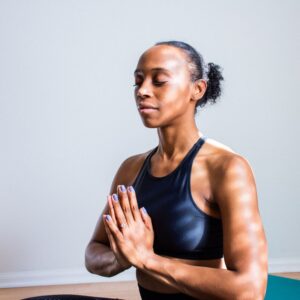
How can we heal these parts of the brain?
Our brain needs 3 things: Oxygen, activation, and nutrition. Regardless of specific parts of the brain, exercise is going to be an extremely powerful tool. It creates a demand of oxygen to the brain, increases circulation, and releases endorphins – reduce sensation of pain and increase sense of euphoria.
Temporal lobe support – high protein diet, Gabba supplements and foods (Fish, yogurt, walnuts, spinach, and brown rice) eye tracking exercises, and music therapy. Music therapy releases Oxytocin – “Love Drug” – neurotransmitter that increases empathy and trust. It is released during hugging, sex, and listening to enjoyable music.
Pre Frontal Cortex support – high protein, low carbohydrate diet and meditation! It is clinically proven that meditation stimulates blood flow to the PFC, essentially making it stronger.
Anterior Cingulate support – High carbohydrate diet (think complex carbs – barley, quinoa, brown rice, sweet potatoes), cardiovascular exercise – stimulates serotonin uptake, serotonin supplements, and writing out your feelings – this is an incredible way to get your thoughts on paper, which will reduce the active negative thoughts.
For more information email [email protected]

What is Neuroplasticity???
August 2022
We have all heard the term “Neuroplasticity”. It is the idea that our brain is plastic, that it can be molded. This process can be good or, in some cases, bad for us in everyday life. See here for Geof Rose’s breakdown of how it works at a molecular level and how it relates to everyday life!

Better POsture in Minutes!
July 2022
Improved posture in 3 minutes! We had never worked with Kyana before, but we knew we could improve her posture in minutes. 1. We activated her rhomoids to ensure they can be involved in the movement of her shoulder blades. 2. Reinforced her neck muscles with an isometric hold. 3. Performed ELDOA in the thoracic and cervical spine in order to create length and increase neurological awareness of how she’s holding herself. Check it out! #posture #techneck #neckpain #neckpainrelief #backpain #ELDOAtuyg
REP APP launching soon!!!
June 2022
Launching soon, the Restore Empower Perform (REP) app helps everyday athletes wash away aches and pains and rejuvenate their bodies. It is a self-help toolbox that will EMPOWER weekend warriors with joint pain protocols that include RESTORATIVE techniques such as self-myofascial release, myofascial stretching, and rehab exercises to not only relieve joint pain, but also increase PERFORMANCE. In addition to mobility routines, the app will feature unique neck pain protocols, thoracic cage mobility (to increase lung capacity for distance athletes), and introduce a groundbreaking technique: ELDOA. This yoga-like technique creates space in joints, benefitting hips, shoulders, spine, and ribs and requires no equipment.

Mental Health Awareness Month
May 2022
Physical activity may be beneficial in the treatment of mild to moderate mental illnesses, such as depression and anxiety. Increased aerobic activity or strength training has been demonstrated to dramatically lessen depressive symptoms. Regular exercise appears to relieve anxiety symptoms and panic disorder, and the benefits appear to be comparable to meditation or relaxation. Acute anxiety reacts to exercise better than chronic anxiety in general. Although there have been few studies of older adults and adolescents with depression or anxiety, physical activity appears to be beneficial to these groups as well. The effect of physical activity on mental health conditions has been explained by a variety of psychological and physiological factors. To clarify the mental health advantages of exercise in varied populations and to address directly the processes underlying the benefits of exercise on mental health, well-controlled research is required. Exercise benefits mental health by lowering anxiety, depression, and low mood, as well as enhancing self-esteem and cognitive performance. Exercise has also been shown to help people with low self-esteem and social withdrawal.
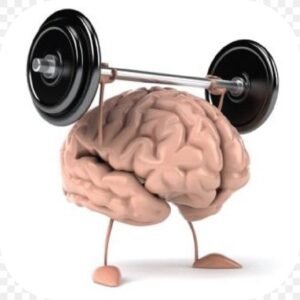
Exercise is especially important in individuals with schizophrenia because they are already predisposed to obesity and because antipsychotic therapy, particularly atypical antipsychotics, carries an added risk of weight gain. University of Nebraska and Omaha Medical center doctors Ashish Sharma, Vishal Madaan, and Frederick D. Petty found that patients with schizophrenia who engaged in a three-month physical conditioning program improved their weight control and reported increased fitness, exercise tolerance, lower blood pressure, increased felt energy, and increased upper body and hand grip strength, according to a study done by doctors at the University of Nebraska. For these health benefits, thirty minutes of moderate-intensity exercise, such as brisk walking three times a week, is sufficient. Furthermore, these 30 minutes do not have to be consecutive; three 10-minute walks are seen to be just as beneficial as one 30-minute stroll. Health benefits from regular exercise that should be emphasized and reinforced by every mental health professional to their patients include the following: Improved sleep, Increased interest in sex, Better endurance, Stress relief, Improvement in mood, Increased energy and stamina, Reduced tiredness that can increase mental alertness, Weight reduction Reduced cholesterol and improved cardiovascular fitness.
Check out these easy concepts brought to you by
Don’t have a 30-minute slot set aside for yoga or a bike ride? Don’t be concerned. Consider physical activity as a way of life rather than a task to cross off your to-do list. Examine your daily routine for opportunities to add action here, there, and everywhere.
Move in and around your home. Clean the house, wash the car, tend to the yard and garden, mow the lawn with a push mower, sweep the sidewalk or patio with a broom.

Sneak activity at work or on the go. Bike or walk to an appointment rather than drive, use stairs instead of elevators, briskly walk to the bus stop then get off one stop early, park at the back of the lot and walk into the store or office, or take a vigorous walk during your coffee break.
Get active with the family. Jog around the soccer field during your kid’s practice, make a neighborhood bike ride part of your weekend routine, play tag with your children in the yard, go canoeing at a lake, walk the dog in a new place.
Get creative with exercise ideas. Pick fruit at an orchard, boogie to music, go to the beach or take a hike, gently stretch while watching television, organize an office bowling team, take a class in martial arts, dance, or yoga.

what is Fascia?
April 2022
 Every organ, bloody artery, bone, nerve fiber, and muscle is surrounded by this structure in our bodies called Fascia. Fascia is like a spider web that connects and maintains all things in place. It possesses a lot of nerves that makes it almost as sensitive as our skin and it does more than just give interior structure. Fascia has the ability to stretch out in all ways without breaking or ripping. It is made to stretch as we move and it tightens up when stressed. A healthy fascia is smooth, slippery and flexible but in cases of trauma, injury, lifestyle of limited physical activity, fascia can become gummy and crickle up and when that happens it is called adhesion. Fascia is made of collagen, a structural protein in the extracellular matrix that binds tissues together.
Every organ, bloody artery, bone, nerve fiber, and muscle is surrounded by this structure in our bodies called Fascia. Fascia is like a spider web that connects and maintains all things in place. It possesses a lot of nerves that makes it almost as sensitive as our skin and it does more than just give interior structure. Fascia has the ability to stretch out in all ways without breaking or ripping. It is made to stretch as we move and it tightens up when stressed. A healthy fascia is smooth, slippery and flexible but in cases of trauma, injury, lifestyle of limited physical activity, fascia can become gummy and crickle up and when that happens it is called adhesion. Fascia is made of collagen, a structural protein in the extracellular matrix that binds tissues together.
Our body’s structures are supported by fascia. It protects tissues and gives muscles, tendons, and joints form. However, by reducing friction between structures, it can aid functional movement. Fascia wraps muscles, tendons, and nerves in movable wrappings. Without fascia, movement wouldn’t be possible. It binds bones to muscle and allows other structures to slide smoothly over each other. Fascia has many functions such as providing a structural framework, absovers shock and transmits force, and providing feedback for balance.
Like any other part of our body, when fascia gets injured it needs time to heal and the appropriate treatment along with it. Gentle motion can be initiated while it heals to ensure that the collagen cells are appropriately aligned. This is supposed to help the body rid itself of scar tissue. Scar tissue is collagen that did not heal properly. Once everything is healed and right in place, strengthening exercises for tendons and muscles will help improve fascia’s ability to handle stresses that are placed upon our body during our daily activities.
In cases of injury in the fascia, heat is used to promote blood flow to the wounded area and ice to reduce inflammation in the injured tissue while healing a fascia injury. Working closely with a rehab professional like a physical therapist or occupational therapist is recommended to get the best outcome after an injury to the fascia.

Gut Health?
March 2022
Gut health refers to the physical state and physiologic function of the many parts of the gastrointestinal tract. Diarrhea, constipation, irritable bowel syndrome (IBS), inflammatory bowel disease (IBD), and heartburn are the most prevalent digestive-related issues. An unhealthy lifestyle, bad diet, a food sensitivity, or even an infection can all contribute to these symptoms. A clue that your leaky gut is mending is the ability to eat foods that previously caused digestion troubles, lethargy, migraines, brain fog, mood issues, and other leaky gut symptoms. Healthy foods will be reintroduced, and your diet will be more varied. Some foods that help improve gut health is Yogurt, Kefir, Miso, Sauerkraut, Kimchi, Sourdough, Almonds, and Olive oil. Processed junk foods, alcohol, sugary beverages, refined oils, and artificial sweeteners should all be avoided to promote the growth of beneficial gut bacteria. Eliminating gluten-containing foods and other common digestive stimulants may also help reduce harmful bacteria. T cells are immune cells that concentrate on specific foreign particles. T cells circulate until they come across their specific antigen, rather than attacking all antigens at once. As a result, T cells play a crucial role in foreign substance immunity. T cells are one of the most common immune cell types in the intestine. Antigens in GALTs, MLNs, and the LP induce these cells to grow and mature in the thymus or the gut. The majority of intestinal T lymphocytes mature in lymphoid tissues. In order to travel into the intestine, these cells express intestinal homing receptors. Naive T lymphocytes travel into gut-associated lymphoid tissues (GALTs) through the blood after exiting the thymus.

Sunlight and Sleep?
February 2022
Sunlight exposure plays a huge role in our sleep. Because melatonin generation is dependent on darkness, light can be regarded as sleep’s worst villain. The pineal gland begins generating the sleep hormone when the retina detects a drop in natural light in the late afternoon.

In other words, the brain receives a “signal” from the eyes that it’s time to start getting ready for bed. Melatonin works by enhancing tiredness and thus making the transition from waking to sleeping easier. Light naturally impacts the circadian cycle by altering the generation of melatonin. The biological clock, also known as the circadian cycle, is nothing more than a process that occurs periodically, the manifestation of a biological event that repeats itself at about the same period. Light is in charge of signaling to the body when it is time to sleep and when it is time to wake up. It’s no surprise that today’s alarm clocks, rather than creating a loud noise, gradually light up the room for a more seamless transition. For those who don’t have an alarm clock it would be of extreme importance to see natural light as soon as you wake up and try avoiding artificial light.
Artificial light exposure in excess or at inopportune times can cause a person’s circadian rhythm to be out of sync with the day-night cycle.
The circadian rhythm, which is “awake” receiving light, is confused by excessive exposure to artificial light. Serotonin synthesis in the body is increased by exposure to sunlight. In addition to being a precursor of melatonin, the “happy hormone” is linked to feelings of well-being, pleasure, relaxation, and sleep. It is not required to spend hours upon hours “consuming” the sun’s rays to reap its benefits. It only takes a few minutes per day, and always with sunscreen.

COVID is back?!?
January 2022
So COVID-19 is making another run for us. The “Omnicron” variant seems to be extremely contagious, but also not as severe as it’s predecessors.
 The virus is tricky as it can be picked up so easily, it;s so contagious. While this is a worldwide pandemic that we can’t seem to slow down, we do have to look at what we can control in this case. We can control our sleeping habits, we can control our thought process, we can still exercise, we can still talk to our friends -thanks technology-, and though it’s a pain to go to the grocery store; we can still control what we eat. At the end of the day all of these things can helpus manage our immune system. While the thought of contracting Coronavirus is scary, we have to ensure we are as prepared as possible if we do happen to catch it. It’s time to boost your immune system so you can limit the potential effects of the virus. See below for ways we can boost our immune system.
The virus is tricky as it can be picked up so easily, it;s so contagious. While this is a worldwide pandemic that we can’t seem to slow down, we do have to look at what we can control in this case. We can control our sleeping habits, we can control our thought process, we can still exercise, we can still talk to our friends -thanks technology-, and though it’s a pain to go to the grocery store; we can still control what we eat. At the end of the day all of these things can helpus manage our immune system. While the thought of contracting Coronavirus is scary, we have to ensure we are as prepared as possible if we do happen to catch it. It’s time to boost your immune system so you can limit the potential effects of the virus. See below for ways we can boost our immune system.
**If you don’t read any further please take this home with you: 80% of our immune system lives in our gut. So the foods we decide to eat will have a major impact on the integrity of our immune system****
Ways to improve our immune system:
Diet – As mentioned above the quality of our digestive system will dictate how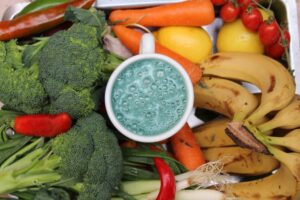 well our immune system can function. Our digestive tract contains “immune cells” that are activated by gut flora (good bacteria), these cells attack pathogens coming into the tract from the food we eat and ultimately stop the pathogens from entering our bloodstream. Gut flora flourishes when we eat vegetables and fruits as well as foods that have active cultures such as yogurt, kimchi, and Kombucha. The flora can become overwhelmed when we consume fried foods, artificial sweeteners, and processed foods.
well our immune system can function. Our digestive tract contains “immune cells” that are activated by gut flora (good bacteria), these cells attack pathogens coming into the tract from the food we eat and ultimately stop the pathogens from entering our bloodstream. Gut flora flourishes when we eat vegetables and fruits as well as foods that have active cultures such as yogurt, kimchi, and Kombucha. The flora can become overwhelmed when we consume fried foods, artificial sweeteners, and processed foods.
Sleep – Getting a great night of sleep is helpful for a number reasons, but mainly from the production of hormones that increase our growth, energy levels, tissue repair, regulate our appetite, and regulate our blood sugar. Sleep also helps our body produce T- Cells. T- Cells are designed to fight cells that have been infected with a virus or pathogen. Two of the hormones that effect our energy levels, Adrenaline and Noradrenaline, are low during sleep. This comes into play as the lower these hormones the “stickier” the T-Cells are in order to attach to the infected cell.
Exercise – Vigorous exercise elevates our body temperature which leads us to sweat out toxins and can prevent bacteria growing in the body. As we know, exercises increases our blood circulation, which will increase the flow of white blood cells (antibodies) that fight pathogens.
Increase of Vitamin D, C, and Zinc –
– Vitamin D increases the effectiveness and response rate of white blood cells How can you get it? SUNLIGHT!!! Get outside! Food sources include salmon, tuna, egg yolks, cheese, and whole milk.
– Vitamin C helps T cells and Phagocytes; immune cells that engulf bacteria, do their job. How can you get it? Food sources such as oranges, grapefruit, tomatoes, strawberries, and broccoli.
– Zinc fires up T- Cell activity and helps modulate the immune system so it doesn’t spiral out of control. How can you get it? Food sources such as red meat and poultry, salmon, eggs, nuts, seeds, and – believe it or not – dark chocolate.
Using supplements to boost vitamin D, C and zinc levels is fine as well, just make sure you take them with a “fatty” meal, like eggs or fish, to increase absorption.
Mindset – Stress does not help our immune system at all! High stress levels lead to a high production of Corticosteroid, which in turn, lower the amount of: B cells – produce anti-bodies and T- Cells, as mentioned before, that fight infected cells. Stress is certainly a major topic right now as the world has been affected by COVID-19. Ways to combat your stress: Breathing exercises, meditation, physical exercise, and sleep.

Stress Relief Routine
December 2021
Coach Rose has put together a 16 minute routine designed to mobilize the hips, bring awareness to your diaphragm, elongate the spine, and increase your heart rate. Putting these concepts together will power down your nervous system and regulate your breathing. Rose guarantees it will reduce your stress levels!

Dealing With “tech Neck”?
November 2021
October is here!, As  the weather changes we must brace ourselves for what could be many more hours of virtual work and schooling. With so many of us working from home, paired with cold weather, will certainly keep us on our devices for long hours throughout the day. Longer durations on our devices promotes slouching, forward head lean, and gives feedback to the brain that these positions are “normal”. But, there is a challenging yet simple exercise that we can all do to reverse this process; ELDOA.
the weather changes we must brace ourselves for what could be many more hours of virtual work and schooling. With so many of us working from home, paired with cold weather, will certainly keep us on our devices for long hours throughout the day. Longer durations on our devices promotes slouching, forward head lean, and gives feedback to the brain that these positions are “normal”. But, there is a challenging yet simple exercise that we can all do to reverse this process; ELDOA.
ELDOA is a French acronym that stands for: Longitudinal Osteoarticular Decoaptation of the Spine, or, simply put, creating space in between joints. This technique can help reverse the effects of gravity, athletic wear and tear, as well as poor posture. While looking at the exercise you may think it’s “yoga”, but when you understand the intention, it is a completely different sensation that can push your limits. Geoff Rose, of REP Athletics, has been working with back pain, scoliosis, and postural issues for 9 years. ELDOA is his number one tool.
How Does it work?

ELDOA postural exercises use an important connective tissue called “fascia” to create tension in different parts of the body to build separation at specific joints in the body. This creates a chain reaction that pulls moisture, nutrients, and oxygen to the joint, making the area healthier. While holding these positions the muscles that keep us erect become stronger and longer. It also promotes a feedback system to our brain reinforcing appropriate neck and back posture.The beauty of ELDOA is that it requires zero equipment and, after mastering it with a certified professional, like Rose, these exercises can be performed anywhere!
Who Should use the ELDOA?
ELDOA is vital for students who are now spending their days in school on a computer, then adding phone and video game time after class. While children are still growing, it is crucial for them to develop body awareness, something screen time can be very detrimental to. ELDOA is also a great tool for anyone suffering from lower back or neck pain.
While the technique might not have the household name that Yoga or Pilates has, it’s garnering serious recognition in both rehabilitation and sports worlds. It’s now a feature of sixteen professional sports teams’ (MLB, NBA, NFL, NHL) strength and rehab programs, including Super Bowl champions; Kansas City Chiefs. Titleist Performance also features it as a part of their certifications program, as ELDOA is considered a powerful tool for those looking to increase rotational mobility on their swing.
REP Athletics is proud to be the only facility in Westchester offering ELDOA. For more information please visit www.repathleticsco.com or to set up an appointment please email us at [email protected]

Breaking Down ADD
October 2021
7 Different types of ADD

Not all ADD presents itself the same way. When we think of ADD we think of short attention span, can’t sit still, and trouble multi-tasking. The reality is that there are 7 different types of ADD; meaning pathologically that parts in our brain that are over-active or under-active can be different. After years of collecting data the Amen Clinics have boiled these into 7 different types of ADD
- Classic ADD is most commonly associated with inattentiveness and distractibility. Common traits are also: disorganized, impulsive, poor follow through, restless, talking excessively.
These characteristics come from decreased activity in the underside of the prefrontal cortex, cerebellum and basal ganglia. The basal ganglia are structures deep within the brain that produce the neurotransmitter dopamine; critical to motivation, attention and setting the body’s idle speed. What to do about it? Increase protein intake, reduce sugar intake.
What to do about it?
Exercise! Include sports, weight training, and cardiovascular training.
2. Inattentive ADD seems to present itself with similar traits to depression – unmotivated and lazy (moves slowly). Other characteristics: trouble focusing, disorganized, poor follow through, poor attention to detail, forgetful, tendency to lose things, problems with time management.
Pathologically this is very similar to classic ADD; decreased activity in the underside of the prefrontal cortex, cerebellum and basal ganglia.
What to do about it?
Again, Exercise! Include sports, weight training, and cardiovascular training. Increase protein intake, lower use of TV/computer, and increase intake of zinc.
3. Overfocused ADD presents itself similar to anxiety. While this type of ADD still leads to impulsiveness and disorganization the main differentiator is the inability to shift focus. Meaning once their mind is on something, it becomes very difficult to pull that person’s attention away. These traits are: excessive worrying, tend to hold grudges, and can be oppositional and argumentative. These characteristics come from a high firing Anterior cingulate (brain’s gear shifter) and decreased activity in the underside of the prefrontal cortex, cerebellum and basal ganglia.
What to do about it?
Exercise! Include sports, weight training, and cardiovascular training. Balance protein and carbs to increase Dopamine and Serotonin. Blend of EPA and DHA fish oil – very important!
4. Temporal Lobe ADD – think emotions and learning. Those are two of the biggest functions of the Temporal Lobe. This type of ADD is consistent with a low firing, sometimes high, Temporal Lobe. That relates to; irritability, temper outbursts, dark thoughts, and learning disabilities. It is common for this type of ADD to be associated with head trauma. Along with the low firing temporal lobe we have our classic decreased activity in the underside of the prefrontal cortex, cerebellum and basal ganglia.
What to do about it?
Exercise! Include sports, weight training, and cardiovascular training. Ketogenic diet – limit carbohydrates significantly, no simple sugars, no violent video games.
5. Limbic ADD is another type that is similar to classic depression. Limbic ADD leads to moodiness, low self-esteem, low energy, negative, and loss of interest. This is due to a high firing limbic system – deeper part of the brain as well as decreased activity in the prefrontal cortex, cerebellum and basal ganglia.
What to do about it?
Exercise! Include sports, weight training, and cardiovascular training. Fish oil supplementation, SAMe supplementation, outdoor activities.
6. Ring of Fire ADD presents itself similar to high-level anxiety, PTSD, or even bipolar disorder. It comes pathologically through a high firing sublayer of the brain; think of someone who can’t turn their brain off. Ring of Fire ADD can be related to some form of allergy, infection or inflammation in the brain. It’s characteristics are: talking fast, racing thoughts, aggressive behavior, anxious, as well as all the classic ADD behaviors.

What to do about it?
Exercise! Include sports, weight training, and cardiovascular training. GABA supplementation as well as foods that are high in GABA; fish, lentils, sweet potatoes, spinach, berries.
7. Anxious ADD is classic anxiety that enhances the classic ADD symptoms. This is again due to a high firing basal ganglia (sublayer of the brain). Its characteristics are – frequently nervous, predicts the worse, physically stressed – think muscle aches/headaches.
What to do about it?
Exercise! Include sports, weight training, and cardiovascular training. GABA supplementation as well as foods that are high in GABA; fish, lentils, sweet potatoes, spinach, berries.

September 2021
Suicide Prevention Month
Suicide is a brutally tough subject to talk about, but a person taking their own life can leave families with a lifetime of pain. The idea of suicide prevention month is to create awareness for people to take note and understand how to take action for those who are suffering. While there may be overactive or underactive parts of the brain that put individuals in such a mindset a healthy lifestyle and a good support system can put those motives at bay.
Understanding suicide
Pathologically suicidal tendencies stem from 3 potential abnormalities in the brain: Temporal Lobes, Pre-frontal Cortex, or Anterior Cingulate.
Temporal Lobes control mood stability, memory, and learning. When speaking of suicidal tendencies it is more so related to left Temporal Lobe. Deficiency’s in the left TL can lead to violent, dark thoughts as well as emotional instability. In a study done by the Amen Clinics; 62% of people who have suicidal thoughts or attempts have deficiency’s in the left Temporal Lobe
Prefrontal Cortex is what is the part of the brain that separates us from animals. It is involved in judgement, reasoning, decision making, ect. When it is under-active we become impulsive and can not reason, leading to bad decisions. Note: It is extremely common for these deficiencies in TL and PFC to come from concussion.
Lastly, the Anterior Cingulate; this is our brain’s gear shifter. If something bad happens or someone insults you and you have a high firing Anterior cingulate you won’t be able to shift your thoughts away from that negative event. This is another common pathology in suicidal tendencies.

How can we heal these parts of the brain?
Our brain needs 3 things: Oxygen, activation, and nutrition. Regardless of specific parts of the brain, exercise is going to be an extremely powerful tool. It creates a demand of oxygen to the brain, increases circulation, and releases endorphins – reduce sensation of pain and increase sense of euphoria.
Temporal lobe support – high protein diet, Gabba supplements and foods (Fish, yogurt, walnuts, spinach, and brown rice) eye tracking exercises, and music therapy. Music therapy releases Oxytocin – “Love Drug” – neurotransmitter that increases empathy and trust. It is released during hugging, sex, and listening to enjoyable music.
Pre Frontal Cortex support – high protein, low carbohydrate diet and meditation! It is clinically proven that meditation stimulates blood flow to the PFC, essentially making it stronger.
Anterior Cingulate support – High carbohydrate diet (think complex carbs – barley, quinoa, brown rice, sweet potatoes), cardiovascular exercise – stimulates serotonin uptake, serotonin supplements, and writing out your feelings – this is an incredible way to get your thoughts on paper, which will reduce the active negative thoughts.
For more information email [email protected]

August 2021
What is Neuroplasticity???
We have all heard the term “Neuroplasticity”. It is the idea that our brain is plastic, that it can be molded. This process can be good or, in some cases, bad for us in everyday life. See here for Geof Rose’s breakdown of how it works at a molecular level and how it relates to everyday life!

July 2021
Better POsture in Minutes!
Improved posture in 3 minutes! We had never worked with Kyana before, but we knew we could improve her posture in minutes. 1. We activated her rhomoids to ensure they can be involved in the movement of her shoulder blades. 2. Reinforced her neck muscles with an isometric hold. 3. Performed ELDOA in the thoracic and cervical spine in order to create length and increase neurological awareness of how she’s holding herself. Check it out! #posture #techneck #neckpain #neckpainrelief #backpain #ELDOA

June 2021
Men’s Health Awareness Month
There is credible research stating that men are more likely to have heart disease, skin cancer, diabetes, liver disease (the list goes on) than women are. This research is missing an integral part of the equation; preventative health care. While medicine has made major strides over the years, it still appears to be that men struggle much more than women do in taking a proactive approach to health. For example, according to a Texas Tech health study, men make half of the physician visits that women do. Many of the health issues that men face, such as heart disease, can be limited, if not eliminated, by staying ahead of the game with yearly check ups and blood tests. So, instead of serving as a “doomsday” notification of high probabilities of diseases to come, let’s allow Men’s Health Month serve as a reminder of empowerment and how to live a healthy, enjoyable life. Below are some tips on how everyone, not just men, can shift their lifestyle in honor of Men’ s Health Month to achieve this healthier life.
Stress
Stress is a pervasive cause of health problems, and not just in men. It can impact all systems of the body, including the musculoskeletal system. When the body experiences stress, muscles react by tensing up to protect themselves from injury or pain. With sudden onset of stress, muscles tense all at once and only release when stress passes. Additionally, chronic stress, which is very common, causes the body to constantly be in a tense state. This tensing of the muscles can lead to tension headaches, migraine headaches, pain in the low back, and pain in the upper extremities. Ultimately, the only way to improve this is to utilize relaxation techniques and de-stressing activities, in addition to trying to manage stress. This can be done through surrounding oneself with a support network, having a regular sleep and physical exercise schedule, and a balanced diet which benefits health in other ways as well.
Sleep
Sleep is an extremely important part of one’s health care routine because sleep deprivation or deficiency, which occurs with a lack of solid night’s sleep, can lead to both physical and mental health problems. Sleep deficiency is linked with many health problems like the ones mentioned above because our bodies rely on sleep to stay healthy. For example, the immune system depends on sleep as that is vital time for T-cell production. With ongoing sleep deficiency, the immune system can change the way it responds and cause trouble fighting infections. Sleep also increases the flow of Cerebral Spinal Fluid which washes toxins and folded proteins, such as Tau (commonly found in Alzheimer’s). Strategies to prevent sleep deficiency and deprivation that can lead to increased health benefits include keeping a routine sleep schedule (which means going to bed at the same time each day), using the hour before going to sleep to relax without strenuous activity or artificial light, avoiding nicotine, caffeine, and alcoholic drinks before bed, and spending time outside everyday doing physical activity.
Exercise routine
Exercising is another way to reduce health risks. Without exercise, the body is at higher risk for heart disease and heart disease risk factors like obesity, high cholesterol, and type 2 diabetes. Type 2 diabetes often occurs due to lack of exercise because physical activity helps control blood sugar levels and lower weight and blood pressure. Getting into a good exercise routine is an easy way to prevent these health risks, and also improve bone and muscle strength and mental health. There are lots of ways to create an exercise routine and add physical activity to one’s life. It is best to be active for about 30 minutes each day, and activity can include anything from walking, to weight training, to yoga, to kickboxing. As long as the activity is includes moving and working the body, it is beneficial. It is important to make the exercise into a normal practice, because a routine will ensure that the activity will have long term positive impacts on health.
For more information on stress management or exercise programs please call us at 914-341-1855.

May 2021
Mental Health Awareness Month
REP owner, Geoff Rose, discusses mental health with meditation and yoga expert Matt Tizol.
The two cover mental health pathologies, support for mental health, and addiction.
To learn more please visit REP Athletics youtube channel

April 2021
Autism Awareness Month
Autism has quite the stigma around it. Cases of Autism vary in severity, and affect lifestyles in many ways, but the modern world does not make it any easier. Our world poses major challenges to those with Autism: a huge demand of technology, bright lighting in public places, and finally; our smartphones.
 We often look at Autism through the lens of a disability, but those who are diagnosed have brain’s that operate in a unique way, a way that is no different from someone who has dyslexia, ADD, anxiety, or OCD. People with dyslexia don’t have low IQ’s – they simply have a low firing Temporal Lobe that slows down their ability for language processing. People with OCD can live a normal life, they just prefer to have things organized in a certain way due to a high firing Anterior Cingulate – a part of the sublayer of the brain that helps us shift our thoughts. And, people with Autism can socialize with the world, we just need to understand their uniqueness.
We often look at Autism through the lens of a disability, but those who are diagnosed have brain’s that operate in a unique way, a way that is no different from someone who has dyslexia, ADD, anxiety, or OCD. People with dyslexia don’t have low IQ’s – they simply have a low firing Temporal Lobe that slows down their ability for language processing. People with OCD can live a normal life, they just prefer to have things organized in a certain way due to a high firing Anterior Cingulate – a part of the sublayer of the brain that helps us shift our thoughts. And, people with Autism can socialize with the world, we just need to understand their uniqueness.
Those with Autism are “commonly” characterized by communication problems, learning disabilities, behavioral problems, and abnormal social skills. The idea of the Autism spectrum is not just based on the severity, but also the brain pattern that comes with it; not all cases are the same. The 2 common patterns seen in Autism – found by Amen Clinics- are:
- Hyper Frontal – High firing Anterior Cingulate (thought shifter), low firing Cerebellum (Coordinates our thoughts and movements)
- Ring of Fire – High firing sublayer of the brain – this is almost identical to those suffering from PTSD.
Both of these patterns have an Anterior Cingulate that is working rapidly, almost like it gets stuck in “ON” mode. This results in becoming obsessive or compulsive over thoughts or things. This is the same activity as those with Anxiety, OCD, Addiction, or Oppositional disorder. And, in today’s world, Anxiety is portrayed as a very normal pattern for someone to have, but for some reason Autism is not.
A low firing Cerebel lum can result in poor coordination and thought processing. This is where the idea that Autistic children have trouble learning has come from. But maybe we just have to look at teaching in a different way. Some may be more visual thinkers; critically thinking in pictures or abstract concepts opposed to detail oriented language problems. These thinkers usually become artists and craftsmen. Others may be more pattern orientated thinkers who see problem solving through relationships and design. They often become architects or engineers. Speaking of which, it should be known that the scientific community believes that both Albert Einstein(famous physicist) and Wolfgang Mozart (famous musician) where both on the Autistic spectrum.
lum can result in poor coordination and thought processing. This is where the idea that Autistic children have trouble learning has come from. But maybe we just have to look at teaching in a different way. Some may be more visual thinkers; critically thinking in pictures or abstract concepts opposed to detail oriented language problems. These thinkers usually become artists and craftsmen. Others may be more pattern orientated thinkers who see problem solving through relationships and design. They often become architects or engineers. Speaking of which, it should be known that the scientific community believes that both Albert Einstein(famous physicist) and Wolfgang Mozart (famous musician) where both on the Autistic spectrum.
Why today’s Structure isn’t good for those on the Spectrum
Technology: It makes us lazier and lazier. Of course, technological advances have helped simplify our lives and made for greater conveniences, but they are slowly eating away at our ability to use our hands. It has also led to abbreviated and rapid transfer of information via social media and news outlets, which we are going to touch on. Those on the Autistic spectrum need to increase the stimulation to the cerebellum in order to create synergy in the brain. This comes from challenging our bodies to move; sports, hiking, painting, and building things with your hands. While technology seems to be convenient for us, it also makes it more convenient to be sitting around staring at a screen when our brains crave physical activity for activation.
Design of public venues: Whether it’s a concert hall, Disney World, or a shopping mall, the stimulation is off the charts. The idea of these sensory layouts is to be stimulating to the brain – grabbing the attention of our eyes. In a study of consumer shopping done by the University of Hamburg they found that bright contrasting lights grabbed the attention of consumers more than a single color scheme. If you apply that to an amusement park or a shopping mall, then add music, and crowds of people, this can be overwhelming for anyone, especially someone who already has a high firing sensory system. It may not be that those on the spectrum can’t function in public places, but rather the design is purposed for making money, disregarding how it could make people feel.
Smartphones: Even though smartphones provide for great conveniences, they also allow us to be “available” at all times. That is true for work, socializing with friends and family, as well as being targeted for advertising. Smartphones are everywhere and our society has become addicted to them; they are a part of our lifestyle. It has driven the idea that people can always respond to work emails, they can achieve more tasks in a shorter amount of time, and we can have a surplus of information and entertainment in seconds – instant gratification. This is detrimental to those on the spectrum as abbreviated information and flipping rapidly from picture to picture does not allow the brain to cognitively process language and develop our thoughts – these processes are done by our temporal lobe and cerebellum; the posterior part of our brain. In fact, a study done on social media by the World Psychiatric Foundation found that social media apps give a quick burst of dopamine to the brain. While this sounds good, Dopamine increases activation in the front part of the brain, which is already firing too high, thus increasing the imbalance in the brain.
It doesn’t look like these aspects of our life are going to be changing anytime soon. But a conscious effort to get outside and exercise can be made, finding hobby’s like painting or playing an instrument, and ensuring face to face socialization will be vital components to creating synergy in the brain for those on the Autistic Spectrum. For more information on lifestyle and dietary suggestions for those on the Spectrum please reach out to the REP team at [email protected]

March 2021
Traumatic Brain Injury Month
With March being Traumatic Brain Injury Awareness Month we thought it would be pertinent to share what happens to the brain after a trauma in order to gain an understanding of what trauma victims are living through.
The idea of walking down the stairs, going to concerts, driving at night, are all normal activities we take for granted. Our vestibular system helps manage sensory inputs during these activities; thinkof mapping out the depth of the stairs, managing booming music, and interpreting bright lights at night. Our brains are well equipped to take these inputs and make them manageable to process so we don’t even consciously think about them. For those who have been through a traumatic brain injury the story isn’t the same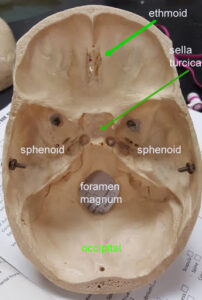 .
.
There are two major concepts to understand why our brain gets “injured” or more accurately; compromised, after a traumatic incident.
- Your brain has the consistency of soft butter, while the inside of your skull – what your brain sits in – contains various ridges. When your head takes on an impact the brain slides and crashes into these unforgiving ridges and creates lesions on the cortex of the brain. These areas of lesions now have disrupted signaling of neurons, essentially creating chaos in the brains complex communication system.

- Your brain is made up of your Cortex (superficial and deep layers), Brain Stem, Cerebellum, and pituitary stalk. Your Cortex sits on top of your Brain Stem like a flower would sit on top of its stalk. When our head takes on an impact or we have “whiplash” our Cortex gets thrusted into rotation putting a major stress on the connecting fibers. This ultimately creates damage to the brain stem and disrupts the communicationfrom the brain stem and pituitary stalk to the Cortex.
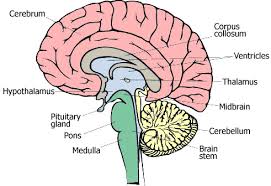
Key Notes
- The Cortex is for processing information, body awareness, forming speech, critical thinking, processing emotions, etc.
- The brain stem fires our cranial nerves that control: taste, sight, sensation, motor control, heart rate, ect
- The Cerebellum manages memory neurons, but its biggest job is to coordinate and adjust movements of our limbs and eyes.
This background information is important to take into consideration when understanding what a TBI victim is going through. Our Central Nervous system works like a computer; signals of information are constantly flying around, being interpreted, and sending information in another direction. When trauma strikes the wiring in our computer chips get damaged and don’t allow for proper communication – transfer of information.
If we respect these concepts it becomes clear why someone with a TBI may struggle to walk down the stairs. Our cortex, which helps us understand the body in space, may not be able to communicate messages properly to our brain stem -that controls our eyes – as well as our cerebellum, which will help us take calculated steps with our lower limbs.
Here at REP we understand and support the journey to recovery for those who have suffered a TBI. There are holistic ways to rehabilitate the brain. To Learn more please visit our Neurotherapy page.

February 2021
Sleep cycles
REP owner, Geoff Rose, breaks down sleep cycles, brain waves, and the activity in our brain as we sleep on the Accomplished Brain podcast. Rose has been asked to co-host the podcast with Andrew Amigo, the founder of the Accomplished Brain.
Sleep should be a cornerstone in living a healthy lifestyle. We all know that sleep is our bodies opportunity to rest and recover, but for our brain sleep is vital for operating at a high level. Though, it’s not because our brain powers down. Our brain is firing at a high, but rythmic level. Sleep, especially our deep sleep stages, is our brain’s opportunity to store and organize information; memories, learned information, conversations, ect.
To learn more please visit REP Athletics youtube channel:

January 2021
BuilD 4 Life
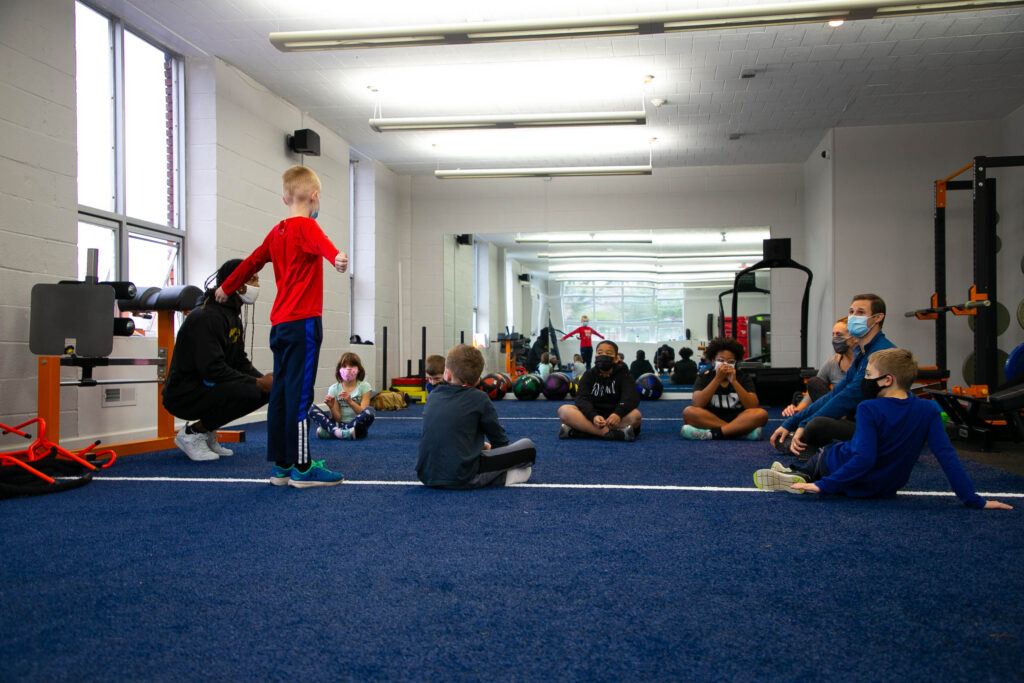
Build for life is designed to be a comprehensive social experience for students in Westchester. While the concept/goal is to build social skills and confidence, the process in how we can bring that out in today’s youth is the key. We have incorporated our backgrounds in order to reach different personalities with different needs. We use movement, body awareness, and team-building exercises to make our students feel comfortable with their peers, but most importantly with themselves.
The heart of who we are, as individuals, is based on our personality, beliefs, temperament, and spirituality. Those traits bring out our ability to articulate our feelings and express our emotion to family and friends. These components are harbored and molded by our brain. Whether it’s a compassionate thought, an attempt to read body language, or a reaction to a fly-ball at a game; all of these scenarios are processed in our brain. In order to enhance life skills it is imperative to understand how the brain processes different scenarios.
Our Methodology is based off the concept that the brain needs 3 things: activation, oxygen, and nutrition. We give the body physical and coordination challenges, which triggers brain activation and a demand for oxygen. We work in an interactive group setting activating different pathways in the brain in order to reinforce the ability to comprehend and react to social situations. Finally, we educate our students on social manners, lifestyle habits, and most importantly; nutrition. Empowering our students to understand healthy eating habits will increase mood stability, calm anxious thoughts, and increase their confidence.

December 2020
Amen Clinic Certified!!!!
Geoff Rose, owner of REP Athletics, has officially been certified by the Amen Clinic! In one year’s time, Rose completed the certification that focuses on neurological disorders ranging from Traumatic Brain Injury, to Alzheimer’s, to Schizophrenia.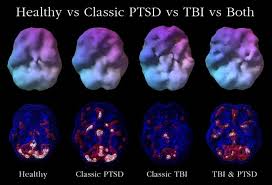
The Amen Clinic uses nuclear imaging to gain a concrete understanding of how the brain is functioning. It allows us to see what parts of the brain are firing high and what parts of the brain do not have enough activation. With over 30 years of imaging, they have the largest database in the country and have used that to master pathologies in reference to specific disorders. They have put together comprehensive protocols relating to diet, supplements, and lifestyle changes to create synergy in the brain.
Dr. Amen’s course deciphers general diagnoses such as ADD, dementia, and depression into specific subsets. Essentially, decoding those umbrella terms as not every case is the same, therefore the treatment for those subsets should be different. For example, there are actually 7 different types of ADD that all have their own pathologies. These types can reveal themselves in an array of ways, making it even more important to take a comprehensive approach in treatment protocols.
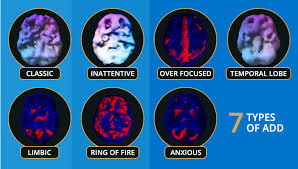 Rose is proud to be a part of the Amen Clinic’s system and is another step is his continued education. He hopes to help those struggling with Neurologicaldisorders with a holistic approach.
Rose is proud to be a part of the Amen Clinic’s system and is another step is his continued education. He hopes to help those struggling with Neurologicaldisorders with a holistic approach.
For more information or to set up an appointment please email us at[email protected]

November 2020
COVID Safe Training
At REP we are taking COVID seriously, but we also take our clients’ mental and physical well-being serious. We are utilizing the space in a way that ensures our clients’ safety while maintaining functionality. We are keeping our windows open and running fans to ensure a rapid rate of circulation out of the building. Take a look to see what it looks like!
We continue to run the heat to ensure a 65 degree air temperature on the gym floor. It’s a little colder than normal, but the fresh air feels great! We know that COVID is a stressful time for everyone, but that makes it even more important to move your body and give your brain stimulation outside of a desk and computer screen.
We continue to run out door group and one on one sessions in local parks as well. Bundle up and grab a friend, we will be there!

October 2020
Preventing “Tech Neck”
October is here!, As  the weather changes we must brace ourselves for what could be many more hours of virtual work and schooling. We face the uncertainty of COVID-19 that, paired with cold weather, will certainly keep us on our devices for long hours throughout the day. Longer durations on our devices promotes slouching, forward head lean, and gives feedback to the brain that these positions are “normal”. But, there is a challenging yet simple exercise that we can all do to reverse this process; ELDOA.
the weather changes we must brace ourselves for what could be many more hours of virtual work and schooling. We face the uncertainty of COVID-19 that, paired with cold weather, will certainly keep us on our devices for long hours throughout the day. Longer durations on our devices promotes slouching, forward head lean, and gives feedback to the brain that these positions are “normal”. But, there is a challenging yet simple exercise that we can all do to reverse this process; ELDOA.
ELDOA is a French acronym that stands for: Longitudinal Osteoarticular Decoaptation of the Spine, or, simply put, creating space in between joints. This technique can help reverse the effects of gravity, athletic wear and tear, as well as poor posture. While looking at the exercise you may think it’s “yoga”, but when you understand the intention, it is a completely different sensation that can push your limits. Geoff Rose, of REP Athletics, has been working with back pain, scoliosis, and postural issues for 9 years. ELDOA is his number one tool.
How Does it work?

ELDOA postural exercises use an important connective tissue called “fascia” to create tension in different parts of the body to build separation at specific joints in the body. This creates a chain reaction that pulls moisture, nutrients, and oxygen to the joint, making the area healthier. While holding these positions the muscles that keep us erect become stronger and longer. It also promotes a feedback system to our brain reinforcing appropriate neck and back posture.The beauty of ELDOA is that it requires zero equipment and, after mastering it with a certified professional, like Rose, these exercises can be performed anywhere!
Who Should use the ELDOA?
ELDOA is vital for students who are now spending their days in school on a computer, then adding phone and video game time after class. While children are still growing, it is crucial for them to develop body awareness, something screen time can be very detrimental to. ELDOA is also a great tool for anyone suffering from lower back or neck pain.
While the technique might not have the household name that Yoga or Pilates has, it’s garnering serious recognition in both rehabilitation and sports worlds. It’s now a feature of sixteen professional sports teams’ (MLB, NBA, NFL, NHL) strength and rehab programs, including Super Bowl champions; Kansas City Chiefs. Titleist Performance also features it as a part of their certifications program, as ELDOA is considered a powerful tool for those looking to increase rotational mobility on their swing.
REP Athletics is proud to be the only facility in Westchester offering ELDOA. For more information please visit www.repathleticsco.com or to set up an appointment please email us at [email protected]

September 2020
Recovery Month

September is National Recovery month; a month to embrace and support thosegoing through recovery and spreading awareness of prevention of addiction. Addiction can be a deep hole to dig out of as it not only effects your mind and body, but those around you. It’s important not to play “the blame game”, but instead have an understanding of how addiction raises it’s ugly head and what we can do about it.
What Addiction Stems From
Environmental and Social factors
Those who live in neighborhoods with multiple alcohol establishments, have schools systems that drugs run though, or even households that keep prescription drugs out in the open may lead to desensitization on usage and may be more prone to take part on a regular basis. Then there is the component of having family members who drink heavily or use drugs; those who are exposed to that environment a young age are at risk of falling into a similar pattern. Lastly, if your work requires you to “wine and dine” or there is heavy usage at neighborhood or family gatherings it can become a social pressure.
Biological and Psychological factors:
While there is still a long way to go in the study of genetics and addiction it is very clear that there is a hereditary correlation to drug abuse. According to a study done by Laboratory of Neurogenetics and the National Institute of Alcohol Abuse and Alcoholism; “gene discovery can reveal underlying mechanisms by which chronic drug exposure promotes stable changes in gene expression, brain structure and function, and, ultimately, behavior”. Those changes can be passed down, making that generation more prone to abusing drugs and alcohol. There is also a personality component. For example; if someone is anxious or is compulsive their brain is firing at a rapid rate. Alcohol helps temporarily calm the brain down, in some ways it can be a way of self medicating. It’s just not a healthy way to do it.
What we should know for our family and friends
The Amen clinic has broken down addictions into 6 different types that relate back to personality traits:
- Compulsive addict – Person who can’t stop themselves, high firing brain, usually can not shift thoughts fluidly.
- Impulsive addict – Person who has poor impulse control, common with those those suffering from ADD, ADHD
- Impulsive/Compulsive addict – Person with a high firing brain, but poor decision making skills.
- Sad addicts – Person with mood disorders, pessimistic, usually has sleep and appetite disorders
- Anxious addicts – Person who is constantly worries and struggles to shift thoughts.
- Temporal Lobe addicts – Person who is emotional, sensitive, and can act delusional.
If we can create correlations with personality traits treatment and prevention will have a much higher chance to succeed. For example; a compulsive addict needs to be able to slow their brain down. This can be achieved be managing stress, finding a hobby, exercising and increasing a calming chemical in the brain; Serotonin. This can be done with increasing complex carbs in their diet as well as cardiovascular exercise. On the other hand and Impulsive addict needs a boosting chemical in the brain: Dopamine! This comes from increasing protein levels and from meditating. Geoff Rose spoke with Matt Tizol, a yoga teacher who offers classes to recovering alcoholics, on meditation in his practice:
 “A yoga practice is essentially about linking breath with movement. Yoga is less about being flexible physically and more about being flexible mentally and emotionally. Alcoholism, while it is certainly an issue of physical control, it is so much more about learning to handle the mental obsession to drink and the emotion that takes us there. Yoga plays an integral part in my recovery from alcoholism. Both on and off of the mat yoga teaches me to breathe. Learning to channel the idea that there is nothing I can’t “flow” through. Pranayama, or breath work, teaches yogis to center the mind and calm the spirit through the use of breath. Asana practice, or the physical poses, become a moving meditation. Paired together, they grant me and other recovering yogis the ability to stay emotionally centered and grounded for an hour or so on the mat and even more so for the other 23 hours of the day.”
“A yoga practice is essentially about linking breath with movement. Yoga is less about being flexible physically and more about being flexible mentally and emotionally. Alcoholism, while it is certainly an issue of physical control, it is so much more about learning to handle the mental obsession to drink and the emotion that takes us there. Yoga plays an integral part in my recovery from alcoholism. Both on and off of the mat yoga teaches me to breathe. Learning to channel the idea that there is nothing I can’t “flow” through. Pranayama, or breath work, teaches yogis to center the mind and calm the spirit through the use of breath. Asana practice, or the physical poses, become a moving meditation. Paired together, they grant me and other recovering yogis the ability to stay emotionally centered and grounded for an hour or so on the mat and even more so for the other 23 hours of the day.”
The medical field is making great strides in understanding how to better treat those with addiction. It’s important to take on the mindset of; “How do we better prevent addiction?”. REP continues to support practitioner’s like Matt who are helping those find emotional balance through practice opposed to drugs and alcohol. For more information please email us at [email protected]

August 2020
Smoothie Time!
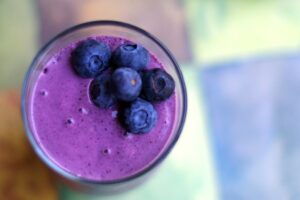

July 2020
Summer Camp

Throughout July, REP Athletics, partnered with Burton Fitness, ran a comprehensive kid’s mini training camp. The took place for three hours on weekdays, allowing campers to work on strength and conditioning, participate in fun team-building exercises, and build their confidence. The camp took place outdoors and obeyed Covid-19 restrictions by having group sizes limited to five kids and social distancing enforced.

June 2020
men’s Health Month
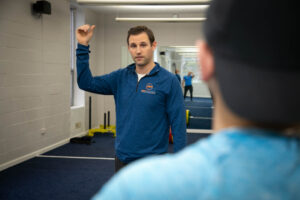 A perspective from owner, Geoff Rose, on preventative health.
A perspective from owner, Geoff Rose, on preventative health.
As Men’s Health Month comes to a close, I am on the verge of finishing the Amen Clinic’s Brain Health certification. This nationwide clinic has the largest database of brain scans in the country in order to work with neurological disorders stemming from traumatic brain injury to mental health disorders. While taking this course, I can’t help but think what my own health will be when I’m older. As medicine has made major strides over the years it still seems that men struggle much more than women to take a proactive approach to their health. According to a Texas Tech health study men make half of the physician visits that women do.
For me, I see a tale of two stories of health in men in my family. My grandfather, Sidney, just turned 100 this month!. While Sydney’s hearing isn’t the best, he is mobile, happy, and healthy. Though, my grandfather on my mom’s side, Ken, sadly passed away 4 years ago at the age of 86. While they had totally different path’s in life, they both had a huge impact on me in different ways.
Sidney was raised in Minot, North Dakota. He grew tough skin as an adolescent growing up during the Great Depression, not to mention dealing with the blistering cold winters. He was a strong athlete who wasn’t so keen on staying in North Dakota after high school. As one who didn’t believe in limitations, he took a trip out to California after his senior year to try out for college basketball teams with the hopes of landing a scholarship. While he didn’t reach his goal for basketball, he did eventually leave North Dakota as he was accepted into the Naval Academy. After graduating, he boarded a submarine and helped sink 13 Japanese ships during the war. When his service was completed, he started a family and became a successful salesman. With his wit and determination he founded a family business that fulfilled the needs of major retail stores around the country. Sydney always believed he could achieve anything he wanted if he put his mind to it. He has been a huge inspiration for me to pursue my passions and to never be deterred.
Kenneth was raised by his grandparents in Fishkill, NY. He became an automotive enthusiast as a way to keep himself out of trouble. He loved to work on cars and boats as he was gifted with incredible hands and an industrious mind. He landed a job at the state-of-the-art IBM lab in Poughkeepsie as a technician. He was a part of a team that developed new computer parts to help IBM push the technological boundaries. As his career was blooming, he was thrown a curve ball. At the age of 32 he was diagnosed with Multiple Sclerosis; a disabling disease that attacks the central nervous system. He battled through for another 30 years at IBM in order to provide for his loving wife and daughter. At the age of 62 he was diagnosed with dementia and was forced to retire. As a young man, I watched him slowly lose his ability to walk and function around the house. Eventually, he needed to enter a nursing home to be cared for properly. Though his body and brain were slowly failing him, he still had this outpouring of energy when I would see him, but it was very focused. It was all for my grandmother. He couldn’t bear to leave her side; he outlived every neurologist’s expectations. He taught me that love and family are the most powerful things we have.
I’ve been in the health industry for 10 years, I am constantly studying to better my understanding of neurological functions, biomechanics, and physiology. In my line of work I continue to run into physical congenital issues like scoliosis, hip dysplasia or sports related injuries, but rarely do I have someone asking me to prevent “what could be” neurological issues like Alzheimers or Parkinson’s or diseases like cancer or MS. While there is a lot of talk about gene testing for probable disease markers, there are more studies starting to focus on; obesity, child obesity, traumatic brain injury, hypertension, alcohol abuse, diabetes, smoking, and high cholesterol as risk factors for neurological and visceral diseases. With Type 1 Diabetes being the exception, all of these factors are 100% preventable. It comes down to healthy lifestyle and preventive measures. We should take note that health insurance companies are giving reimbursements for gym memberships and are interested in data from our fitness trackers. They all know that these habits can lead to healthier lives. It should be noted, that according the Amen clinic, that exercise decreases the APEO e4 —gene associated with increased chances of Alzhiemer’s- impression.
As a 32 year old, my family health history sits on polar opposites. I certainly can’t wait in fear to see if I have MS or early onset dementia. I know very well that I can put myself in a position to be in control of such diseases with yearly check ups, blood tests, health screenings, ect.I plan to engage in consistent action to ensure I don’t fall behind. Though, as I finish the Amen Clinic certification there is a common theme when it comes to treating Dementia, anxiety, vascular disease; diet and exercise. They are a part of every single treatment plan the Amen clinic has. According to Johns Hopkins medicine 80% of your immune system lives in your gut, the better your diet, the stronger your immune system. For exercise, it helps relieve stress, burns toxins, and demands oxygen to your brain. These are “no brainers” that can help stave off visceral and neurological dysfunction, ultimately giving yourself a better chance to have a healthy, high quality of life.
My grandfathers are my heroes; they taught me how to be fearless, value family, and most importantly, how to love. I plan on being healthy enough to do the same for my family.

May 2020
mental Health Awareness Month
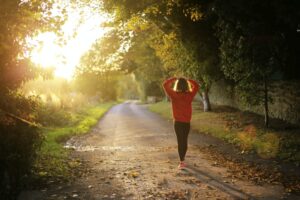 Health Month is important to build an understanding of not only what peers or family members are going through, but potentially taking a look your own habits and lifestyle to see how you can be helping yourself. REP has put together a quick run down of understanding what our thoughts and emotions come from and how we can make changes in our habits to lighten the “mental load”.
Health Month is important to build an understanding of not only what peers or family members are going through, but potentially taking a look your own habits and lifestyle to see how you can be helping yourself. REP has put together a quick run down of understanding what our thoughts and emotions come from and how we can make changes in our habits to lighten the “mental load”.
How we react to emotions can define our relationships personally and professionally. With today’s world being so fast paced and a large demand for instant gratification we rarely have time to reflect on our emotions. This can limit our ability empathize with others as well as take a deep look at ourselves. Over 40 Million Americans suffer from either depression or anxiety. It is important for those who are suffering that they cannot blame themselves and there are holistic, simple ways to help themselves.
It is important to understand where and how your emotions come about: your nervous system, which is powered by your brain.
Depression: Predominantly a Frontal lobe issue (low activity) that dictates our emotions, judgement, reasoning, and empathy.
Anxiety: Predominantly an issue with our Basal Ganglia (a system deep in our brain that helps us work through and shift thoughts). Those with Anxiety tend stay with a thought for an extended period of time apposed to shifting away from it. Something to remember: every time we have a thought we produce a chemical reaction in the brain that could be good or bad. So how do we start producing good chemicals?
Write it out!
- Get your thoughts, concerns, and worries on paper.
- Ask yourself: Can it be true? Can I prove that it’s true? If you can’t prove that it’s true, then why worry about it?
- Create potential solutions and rid your self of those thoughts. Take a deep breathe and take a look at the other side of the equation. There will be a light that can guide you to a solution.
Giving the Brain what it needs
The Brain needs activation and Oxygen. We have all heard it a thousand times: EXERCISE! But Why? When we exercise our body demands Oxygen, the more we demand the more we can get to the brain, the more that gets to the brain, the healthier it becomes :). Based on the Journal of Psychiatry and Neuroscience study of Serotonin levels (a neurotransmitter that regulates mood, behavior, and sleep) cardiovascular training is the most efficient way to create Serotonin. Exercise also helps us release Endorphins in our body, also known as the “happy hormone”. It should also be noted that playing sports takes a massive amount of coordination. This fires up the Pre-frontal Cortex, located in the Frontal Lobe. The more activation we get here the more we wake up the Frontal Lobe.
 Meditation
Meditation
It is clinically proven that meditation gets blood to the Frontal Lobe and slowly powers down the other lobes. This can help create more synergy in the Brain and allow for proper Frontal Lobe function. An important aspect of meditation is rhythmic breathing. This activates the vagal nerve, which has a direct correlation to the Basal ganglia, allowing your brain to shift from thought to thought more efficiently. Find a yoga teacher who specializes in mediation or download an application on your phone to get started.
Nutrition for the Brain
What to keep out: Foods that will create inflammation: Fried foods, high levels of sugar, processed foods, and in some cases; gluten and dairy. The less inflammation in the body the more efficient the blood flow to the brain.
What to add to the diet: Complex carbs: sweet potatoes, brown rice, quinoa, etc. Complex carbs promote high levels of Serotonin an important chemical that helps calm the brain down.
Supplementation:
- Fish oil: known to block Cortisol; the stress hormone.
- Rhodiola: a plant that supports proper function to the Pre-Frontal Cortex.
- Ashwandha: a plant that reduces cortisol levels and increase blood flow to the Frontal Lobe.

April 2020
Virtual Training Program
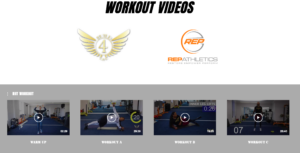
he intention of each movement. The library also contains a stretching routine for you to pair with your workout or use on its own for a “recovery” day. The library will be updated once a month. Access to this library is $15 per month.
If you prefer tailored workouts, REP is will happily build you a customized workout program. This includes 4 specialized workouts a month, with the intention that we
 would continue to advance your workouts on a monthly basis. This is only available for current clientele at this time. Customized programming is $80 per month
would continue to advance your workouts on a monthly basis. This is only available for current clientele at this time. Customized programming is $80 per month
Lastly, the trainers at REP are doing half hour live Zoom and FaceTime sessions to create as much of a realistic session as we can during this time. Although it is not quite the same as being in person in the gym, it still serves as a more intimate, personal session for clients to get a workout in. FaceTime/Zoom session cost $45 per half hour.

March 2020
COVID-19
Coronavirus has wreaked havoc on our lifestyles, the economy, and our stress levels. While a lot of our stress can be coming from being cramped up at home or the stock market tanking it really boils down to us “not having control”. We thrive in an environment wherewe dictate our own social plans, how we get around, and we just don’t have that right now.
 The virus is tricky as can be picked up so easily; it can last on surfaces for days, it can be dormant in our system for up to two weeks without us knowing, not to mention, it can be contracted through air particles.While this is a worldwide pandemic that we can’t seem to slow down, we do have to look at what we can control in this case. We can control our sleeping habits, we can control our thought process, we can still exercise, we can still talk to our friends -thanks technology-, and though it’s a pain to go to the grocery store; we can still control what we eat. At the end of the day all of these things can helpus manage our immune system. While the thought of contracting Coronavirus is scary, we have to ensure we are as prepared as possible if we do happen to catch it. It’s time to boost your immune system so you can limit the potential effects of the virus. See below for ways we can boost our immune system.
The virus is tricky as can be picked up so easily; it can last on surfaces for days, it can be dormant in our system for up to two weeks without us knowing, not to mention, it can be contracted through air particles.While this is a worldwide pandemic that we can’t seem to slow down, we do have to look at what we can control in this case. We can control our sleeping habits, we can control our thought process, we can still exercise, we can still talk to our friends -thanks technology-, and though it’s a pain to go to the grocery store; we can still control what we eat. At the end of the day all of these things can helpus manage our immune system. While the thought of contracting Coronavirus is scary, we have to ensure we are as prepared as possible if we do happen to catch it. It’s time to boost your immune system so you can limit the potential effects of the virus. See below for ways we can boost our immune system.
**If you don’t read any further please take this home with you: 80% of our immune system lives in our gut. So the foods we decide to eat will have a major impact on the integrity of our immune system****
Ways to improve our immune system:
Diet – As mentioned above the quality of our digestive system will dictate how well our immune system can function. Our digestive tract contains “immune cells” that are activated by gut flora (good bacteria), these cells attack pathogens coming into the tract from the food we eat and ultimately stop the pathogens from entering our bloodstream. Gut flora flourishes when we eat vegetables and fruits as well as foods that have active cultures such as yogurt, kimchi, and Kombucha. The flora can become overwhelmed when we consume fried foods, artificial sweeteners, and processed foods.
well our immune system can function. Our digestive tract contains “immune cells” that are activated by gut flora (good bacteria), these cells attack pathogens coming into the tract from the food we eat and ultimately stop the pathogens from entering our bloodstream. Gut flora flourishes when we eat vegetables and fruits as well as foods that have active cultures such as yogurt, kimchi, and Kombucha. The flora can become overwhelmed when we consume fried foods, artificial sweeteners, and processed foods.
Sleep – Getting a great night of sleep is helpful for a number reasons, but mainly from the production of hormones that increase our growth, energy levels, tissue repair, regulate our appetite, and regulate our blood sugar. Sleep also helps our body produce T- Cells. T- Cells are designed to fight cells that have been infected with a virus or pathogen. Two of the hormones that effect our energy levels, Adrenaline and Noradrenaline, are low during sleep. This comes into play as the lower these hormones the “stickier” the T-Cells are in order to attach to the infected cell.
Exercise – Vigorous exercise elevates our body temperature which leads us to sweat out toxins and can prevent bacteria growing in the body. As we know, exercises increases our blood circulation, which will increase the flow of white blood cells (antibodies) that fight pathogens.
Increase of Vitamin D, C, and Zinc –
– Vitamin D increases the effectiveness and response rate of white blood cells How can you get it? SUNLIGHT!!!. Food sources include salmon, tuna, egg yolks, cheese, and whole milk.
– Vitamin C helps T cells and Phagocytes; immune cells that engulf bacteria, do their job. How can you get it? Food sources such as oranges, grapefruit, tomatoes, strawberries, and broccoli.
– Zinc fires up T- Cell activity and helps modulate the immune system so it doesn’t spiral out of control. How can you get it? Food sources such as red meat and poultry, salmon, eggs, nuts, seeds, and – believe it or not – dark chocolate.
Using supplements to boost vitamin D, C and zinc levels is fine as well, just make sure you take them with a “fatty” meal, like eggs or fish, to increase absorption.
Mindset – Stress does not help our immune system at all! High stress levels lead to a high production of Corticosteroid, which in turn, lower the amount of: B cells – produce anti-bodies and T- Cells, as mentioned before, that fight infected cells. Stress is certainly a major topic right now as the world has been affected by COVID-19. Ways to combat your stress: Breathing exercises, meditation, physical exercise, and sleep.

February 2020
REP’s First Speed and Agility Clinic!
Last Month’s speed and agility clinic was an absolute blast! REP hosted 16 athletes who were tested in their vertical leap, agility, and linear speed. Each Athlete received a report card with their original scores, then received coaching in sprint mechanics, hip strengthening, and ground force training. The final part of the clinic was getting re-tested in each category to see if their scores improved. Each athlete improved in at least 2 categories!!!
REP wants to thank AJ Burton and Tom O’Neill for bring their expertise in performance training to this clinic. We will offer this clinic again in the Spring, stay tuned!

January 2020
TAKE PRIDE IN YOUR
BRAIN

The heart of who we are, as individuals, is based on our personality, beliefs, temperament, and spirituality. Those traits bring out our ability to articulate our feelings and express our emotion to family, friends, and co-workers. These components are harbored and molded by our brain.
Brain Aging
“Brain Aging” refers to the “wear and tear” and speed of your brain. We are born with 100 billion neurons (cells) in our brain. Neurons provide vital connections via synapses (electrical bridges) to keep information running smoothly. As we go through life we lose and rebuild these neurons, but as we get to the age of 40 the brain cannot keep up the re-building process and begins to decline.
Our habits and lifestyle can affect the age our brain. Brain Aging is caused by weakened Cerebral pathways and/or damaged neural material (think scar tissue) that destroy synapses. Both of these eventually slow down the transfer of information in the brain. This can lead to disorders such as Dementia, Parkinson’s, and Alzheimer’s. What makes us so resilient as humans is the fact that we can keep this decline at bay if we take pride in our brain.
BIG
PLAYERS
The largest “mass” of the brain that is divided into four lobes. These lobes are responsible for processing and responding to different types of sensory information.
A series of neurons (cells) that connect to send to a signal from one part of the brain to the other. Think of the electrical wiring in your home.
A series of neurons (cells) that connect to send to a signal from the brain to the spinal cord. This will allow us to complete and adjust physical movements. Think of an outlet, a plug, and a lamp. The electricity will move from the outlet, through the plug, to allow the lamp to turn on.
Area involved in long term memory and language processing B. Parietal Lobe: known as our “thought factory”, determines brain “speed” and “age” C. Frontal Lobe: involved in decision making, judgment, and emotions.
Organ that moves blood throughout the body’s circulatory system.

EMPOWER
YOURSELF
It all starts with understanding if you could be at high risk for early brain aging. Health issues such as cardiovascular disease, untreated depression or ADD, excess intake of alcohol, traumatic brain injury, and diabetes greatly increase your risk of early brain aging.
Next, you understand what foods can support a healthy brain.
- Omega 3’s, garlic, ginger, rosemary, berries, green tea, pomegranate are important to Brain health as they decrease inflammation. The less inflammation in the body, the better the blood flow to the brain.
- Oregano, cloves, thyme, berries, artichoke, and cocoa can fight off Free Radicals. Free radicals are toxins that can destroy the power source to cells, Mitochondria, essentially leading to cell death. The antioxidants in these foods will inhibit the free radicals before they can enforce any damage to cells.
Keeping a healthy blood sugar level is paramount to healthy gut and brain function. As sugar enters the body, your pancreas fires up insulin to transport the glucose (sugar) to your cells for energy. If the demand for insulin becomes extremely high the cell becomes resistant to insulin, the insulin builds up outside of the cell, like scar tissue, hindering the current of electricity (cell communication).
We know exercise burns calories and releases endorphins (happy hormones!), but it also helps strengthen our brain. When we do physical exercise our Cerebro-spinal pathway fires in order to coordinate and adjust our movements in order to complete the task. The more coordination you can challenge yourself with; ping pong, darts, or basketball, the more “strength” you can build in the brain. Exercise also protects the brain against free radicals, improves brain metabolism of cholesterol, improves oxygen levels to brain, and increases tone in blood vessels in the brain (this is vital to long term blood flow).
Lastly, find a hobby or an activity that you can fall in love with. This will give your brain the opportunity to shift away from the stresses and pressures we all face in life. Today’s world is fast and tough. Do something for yourself like hiking, joining a book club, or volunteering at a pet shelter where you can be in your element and meet like-minded people.
Taking pride in your brain can put anyone on the path to a long, happy life. It will give you the opportunity to embark on exciting journeys, a fulfilling career, and build strong personal relationships.
TAKE PRIDE IN YOUR
BRAIN

